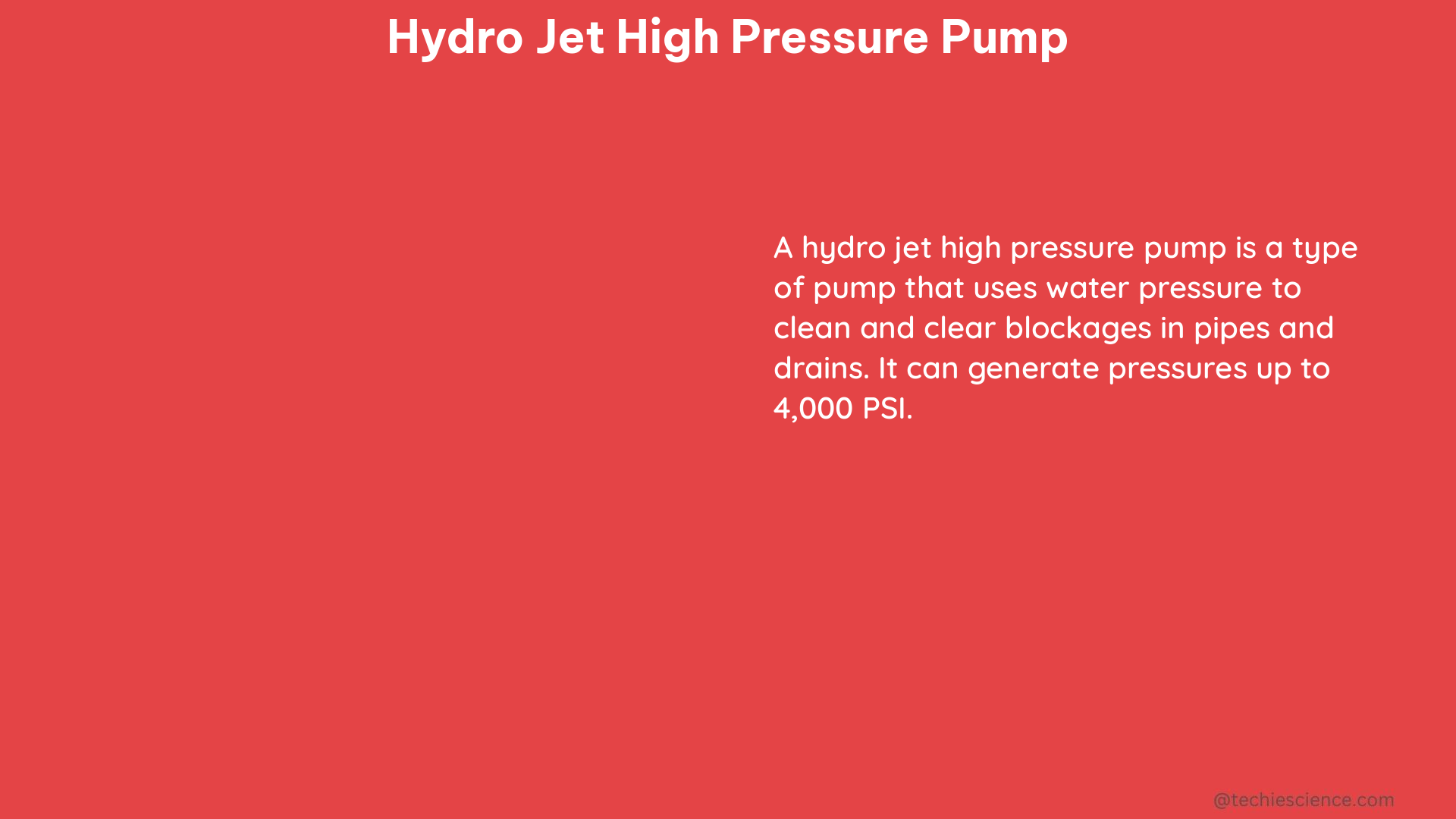The hydro jet high pressure pump is a crucial component in the high pressure rinsing (HPR) systems used for the surface preparation of high field superconducting cavities. This powerful pump generates a high-velocity water jet that is used to clean and prepare the cavity surfaces, ensuring optimal performance and efficiency.
Understanding the Hydro Jet High Pressure Pump
The hydro jet high pressure pump works by converting electrical energy into mechanical energy, which is then used to propel a high-velocity water jet. The pump typically operates at pressures ranging from 17.24 MPa to 43.10 MPa, with the water jet velocity reaching up to 179.4 m/s at the lowest pressure.
Measuring the Pump’s Performance
The performance of the hydro jet high pressure pump is measured using the transferred momentum between the water jet and a target connected to a load cell. This method allows researchers to evaluate the effectiveness of the HPR water jets in different laboratories. The information gathered during these measurements, combined with the HPR process parameters, can be used to calculate several significant variables, including:
- Jet Power: The power of the water jet, which is a crucial factor in determining the cleaning efficiency of the HPR system.
- Deposited Energy: The amount of energy deposited on the cavity surfaces, which affects the cleaning effectiveness and potential damage to the surface.
- Pressure: The pressure of the water jet, which directly impacts the cleaning performance and the dynamic response of the system.
Experimental Study on Static and Dynamic Responses
A study was conducted to understand the basic static and dynamic responses of high-pressure micro water jet systems in the presence of nonuniform parameters. The researchers performed a total of 64 sets of experiments to investigate the influence of various parameters, including:
| Experimental Parameters | Values |
|---|---|
| Voltage U (V) | 800, 1000, 1200, 1400 |
| Pressure P (MPa) | 17.24, 25.86, 34.48, 43.10 |
| Distance d (μm) | 100, 200, 300, 400 |
The flow rate of the high pressure system was directly measured to obtain the true velocity of the water jet (Vj) for each fixed pressure (P) and distance (d). The discharge coefficient was determined to be 0.97 for the diamond orifice used in all experiments, allowing the calculation of the minimum water jet velocity of 179.4 m/s for the lowest pressure (17.24 MPa) used in the study.
Dynamic Response of the Water Jet
The dynamic response of the water jet motion in changing electric fields was also investigated. The key findings from this study include:
- Low Frequency Signals: For low-frequency signals, the water jet deflection follows the static model, which is sufficient to predict the jet’s motion in response to different types of signals.
- High Frequency Signals: The static model is not suitable for describing jet motion at high frequencies (> 100 Hz). Instead, a simple first-order system can be used as a model to predict the jet’s motion.
- Water Pressure Impact: Water pressure has the largest impact on the time constant of the system, and a possible relationship between the time constant and water pressure has been proposed.
Optimizing the Hydro Jet High Pressure Pump

To ensure the optimal performance of the hydro jet high pressure pump in HPR systems, several factors must be considered:
- Jet Power: Maximize the jet power to improve the cleaning efficiency of the HPR system.
- Deposited Energy: Carefully control the deposited energy on the cavity surfaces to avoid potential damage.
- Pressure: Optimize the water jet pressure to achieve the desired cleaning performance while considering the dynamic response of the system.
- Discharge Coefficient: Maintain a consistent discharge coefficient for the orifice to ensure accurate water jet velocity calculations.
- Dynamic Response: Understand and account for the dynamic response of the water jet, especially at high frequencies, to accurately predict and control the system’s behavior.
By understanding and optimizing these key factors, researchers and engineers can ensure the efficient and effective operation of the hydro jet high pressure pump in HPR systems for the surface preparation of high field superconducting cavities.
References
- D. Sertore, M. Fusetti, P. Michelato, C. Pagani, INFN Milano-LASA, I-20090 Segrate (MI), Italy
- T. Higo, J. Hong, K. Saito, KEK, Tsukuba, Japan
- G. Ciovati, T. Rothgeb, JLAB, Newport News, VA 23606, USA
- A. Matheisen, N. Krupka, DESY, Hamburg, Germany
- High pressure rinsing system studies
- Response of High-Pressure Micro Water Jets to Static and Dynamic Responses

The lambdageeks.com Core SME Team is a group of experienced subject matter experts from diverse scientific and technical fields including Physics, Chemistry, Technology,Electronics & Electrical Engineering, Automotive, Mechanical Engineering. Our team collaborates to create high-quality, well-researched articles on a wide range of science and technology topics for the lambdageeks.com website.
All Our Senior SME are having more than 7 Years of experience in the respective fields . They are either Working Industry Professionals or assocaited With different Universities. Refer Our Authors Page to get to know About our Core SMEs.